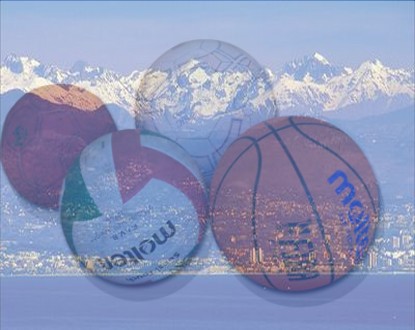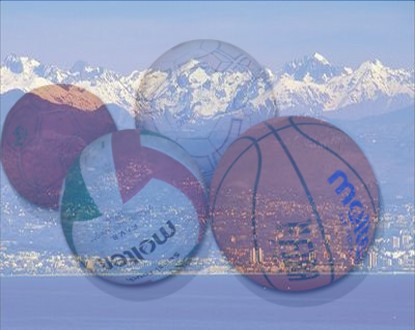Since the election of Christian Estrosi (known for his sports passion as a former motorcycle champion) as Mayor, the municipality has launched an ambitious plan that addresses both elite sports and sports for all.

- the significant increase in the sports budget (+40%)
- the growing attention to repairing minor equipment and even the ambitious and costly program to construct a new stadium, followed by an aquatic complex (provided there is an agreement with the Swimming Federation and the Ministry of Sports)
-
a social policy focused on sports for all, with full or partial coverage of license costs for youth under 18 whose families are not subject to income tax.
It must also be acknowledged that the elite sports policy does not meet the standard that should be expected of the 5th city in France, at least in terms of team sports (the elite individual athletes from Nice clubs are not included in this assessment).
Indeed, when considering the top five sports disciplines—football, rugby, handball, volleyball, and basketball—no Nice club excels in accomplishments or position in the national hierarchy (talking about international results would obviously be unnecessary as they are non-existent). The same goes for so-called “minor” sports such as ice hockey, American football, table tennis, and many others.
To stick to facts and especially results: when comparing with other cities of similar size like Toulouse or Montpellier, the difference is stark.
Unfortunately, we do not have full knowledge of club budgets, and it is well known that money is the sinew of war. However, it is hard to imagine that it is merely a matter of municipal funds: Is there also a lack of ideas and management?
It is true that clubs are associations, even capitalistic societies with a sports goal, with governance not necessarily subject to the Mayor’s approval. However, it cannot be said either that the City’s sports policy is completely absent in the management of clubs, especially with the often decisive importance of allocated grants and indirect support provided.
A few examples:
Doesn’t anyone see that the public is not attending matches? What is the reason? Lack of interest or simple disaffection?
OGCN has one of the worst averages (8,000 spectators) in its championship, and other sports clubs have attendance of mere thousands or hundreds of people.
Is there no way to coordinate efforts so that a sports enthusiast can buy a common ticket or even a subscription allowing them to attend all the weekend’s matches? While there would certainly be administrative difficulties in implementing this, one can imagine that they are not insurmountable.
Is it so complicated to distribute free tickets to schoolchildren, college students, high school students, and university students in Nice by signing agreements with public and private institutions so that everyone can benefit equitably?
And what about commercial revenues, which are sometimes a negligible part of club budgets to this day? Is there a way to pool everything related to sponsorship, marketing, or merchandising? Would a common advertising agency be a utopia?
Though the economic fabric of the Nice region is not particularly dense, and national and multinational company headquarters are not numerous, it is nonetheless true that SMEs can be an interesting target for sport-business partnerships. Moreover, it should not be overlooked that sports and their events are one of the most important tourist attractions, with all studies on this economic niche confirming it with numbers that should interest hoteliers and other local businesses.
But is anyone making the effort to publicize this, to be an ambassador to these economic decision-makers? What are the relationships and initiatives with and through the Chamber of Commerce, UPE 06, craft and trade associations, merchants?
Did you know that the French fiscal system for donations is one of the most advantageous at the European and global levels for both companies and individuals (particularly those who pay the Wealth Tax)? Is it truly impossible for municipalities and sports clubs to organize an information campaign aimed at professionals and targeted individuals for fundraising action?
Or still, is it really necessary that the colors of the outfits are all different and do not represent those of the City to create identification and loyalty? Agreed, we know the answer: each club has its history and traditions. But can we reasonably refuse modernity and its rules, which certainly go beyond poetry? What about carrying the Nissart eagle as a common emblem?
The future looks no better than the present
Football: after a season finished by the skin of their teeth with a last-ditch survival in Ligue 1, the new president and investor Jean-Pierre Rivère has set a goal of a place around 10th place. While this objective has the merit of being clear and realistic, it cannot be said to be very ambitious, especially with the prospect of the new Grand Stadium.
Rugby: after the bankruptcy of the SASP of the English investor Paul White, the association leaders actively seek one or more new shareholders, with all the difficulties one can imagine. Given the difficulties following attempts to destabilize the club by a few so-called well-meaning former glories, we’re more in a survival plan than towards a climb to professional rugby.
Handball: Remaining in the context of the women’s team, the transition from ASPTT to OGCN is, in the minds and hopes of the leadership and the club’s biggest supporter, sports deputy Gilles Veissière, a guarantee of funding to achieve promotion to the upper division. To be continued…
Volley: President Griguer aims to regain the top level, just one season after departing from it. However, the disappointment of last season, when the team crumbled as soon as it faced the first difficulties, was such that any prediction requires confirmation.
Basketball: the only satisfaction of last season was thanks to a promotion that was unplanned but was achieved with determination and bravery. The objective remains to confirm this progress and ensure staying up.
As can be seen, the summary framework is not delightful, rather problematic, and falls far, far short of a positive and comfortable outlook for the future.
Agreed inaugurations… But isn’t setting up an ambitious strategy equally important?
Why should Nice remain France’s 5th city, except in sports, and not afford the means for its ambitions?
To date, we don’t see the slightest indication of all this.
So?
Conclusion: As a Chinese proverb says, “If you want to be happy for a day, drink a glass of wine; for a week, kill a pig; for a month, get married; for a lifetime, garden.”
Moral: Should we turn to gardening instead of sports practice?
The Sports Budget in Nice
32 million € including tax in 2009, 30 million € including tax in 2010, an increase of 40% from previous years…
35 million € including tax invested since March 2008.
The delivered facilities
Delivery of 10 synthetic fields since 2008 in different city neighborhoods: Stade Nicolaï, Stade la Clua, Stade Saint-Charles, Stade Marchetti, the Stadium, La Lauvette, Bon Voyage, Las Planas, Stade des Galeries Lafayette
Renovation of Jean-Bouin Complex
Complete rehabilitation of Jean-Médecin Pool
Renovation of La Lauvette Sports Complex
Renovation of boule courts: Henri-Dunant, USCCA, Barsi, Vallon des Fleurs…
Investments made in 2011
Stade Alfred Méarelli
Equestrian center
Creation of a type C UFR STAPS gymnasium
Creation of 2 synthetic fields at Francs-Archers
Saint-Isidore boules court
Toti microsite (Nice-Nord)
Structural projects for the future
French Tennis Federation Training Center (4 indoor courts + 7 outdoor courts) – work begins end of 2011
Renovation of Charles Ehrmann Sports Park
Olympique Nice Stadium in 2013 (construction begins in August 2011)
Creation of an aquatic complex (under study)
Creation of a type B gymnasium in Ariane
-These efforts in sports facilities have been accompanied by measures to develop sports practice in neighborhoods.
-Funding licenses by the city of Nice for young Nisards from 6 to 18 years. 200,000 € including tax invested. Over 8,000 youth directly concerned this year.
-Involvement of high-level athletes and municipal sports action service in schools to encourage youth sports practice.
-“Open stadiums” operation for young people in troubled neighborhoods.
-Signing in October 2010 of an agreement with the “Fête le mur” association of Yanick Noah to develop tennis in the Moulins district.
-Preferential rates (up to 50% less) for students, seniors (over 60), and people with disabilities for access to Jean-Bouin and Jean-Médecin sports complexes.
-Increased support to sports associations with a 50% increase in grants for small neighborhood clubs… 9 million € including tax in grants in 2011.
-Creation of a disability unit in the sports department to develop physical and sports activities for people with disabilities…



